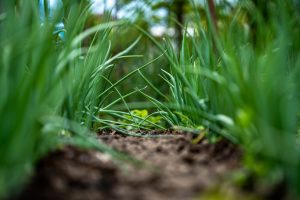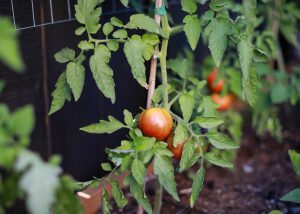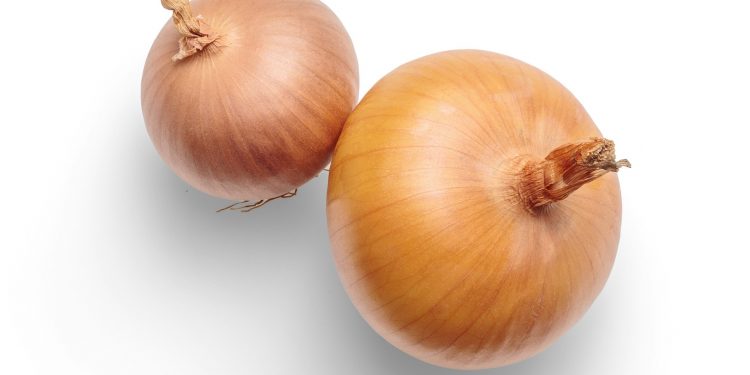Have you ever had an identity crisis? Well, I had. But I also have a botanical identity crisis about what I eat. Well, laugh at me, but many people wonder about such things. Because of the complex nature of nature and ever-evolving science, it is not unusual to have such doubts.
If you have similar thoughts, you might have found yourself standing in the kitchen with a knife in hand and a humble onion on your cutting board, wondering,” Is onion a fruit or a veggie?”. Or maybe seeing you cook, a toddler might have asked you the same.
Well, we are here with answers for you and for you to give to your toddler.
Is an onion a fruit? The answer is simply no! Well, onion is, in fact, a vegetable. It does not meet the criteria to be a fruit. But what exactly makes onion a vegetable?
Let’s dive in and peel back the layers of the onion’s botanical identity.
What Makes a Fruit a Fruit?
Let us start with the basics. To understand if the onion is a fruit, let us look at what makes a fruit a fruit.
Fruits, in botanical terms, are the ovaries of flowering plants that house seeds. How is it different from vegetables, though?
Some of the common differentiators are the anatomy and taste of each. Remember 3 common facts:
- A fruit is a plant structure that bears seeds, facilitating reproduction.
- A vegetable comprises roots, stems, leaves, etc., lacking seed-bearing functions.
- Vegetables tend to be savory with lower sugar content; fruits are valued for sweetness.
Surprisingly, a noticeable number of commonly used vegetables that are a staple in our kitchen are technically fruits, some of which you might be unaware of!
Some vegetables that are a staple in our kitchens are actually considered fruits! This includes tomatoes, cumbers, eggplants, zucchinis, bell peppers, etc, which are actually scientifically either considered as fruits or both a vegetable and a fruit.
This means, botanically, they are fruits, but in the culinary world, they are vegetables. It's the best of both worlds for them, huh?
The Anatomy of an Onion

1. Leaves
Onion has scaly as well as fleshy leaves.
The scaly leaves are dry outer layers that protect the inner bulb. Originally fleshy, they transform to shield against pests and friction. The fleshy leaves are the parts we consume. They store antioxidants, flavonoids, anthocyanins, propanediol S-oxide, dimethyl Sulphate and various other vitamins and minerals.
2. The Bud
Inside these leaves, at the stem’s tip, there is a small central bud. This contains embryonic cells and also helps in the onion’s growth. This bud serves as an origin point for flowers and seed production.
3. Axillary Buds
This surrounds the central bud. This part contributes to lateral growth. The whole onion is considered a modified stem. It helps with vital functions and nutrient transport to the bulb and the roots.
4. The roots
Short roots at the bulb’s base help anchor the onion in the soil. This is responsible for the nutrient absorption.
5. Green leaves
Didn’t we talk about this already? Well, this is different from bulb’s leaves. These are leaves that are above ground and are green, fleshy, and fan-shaped. These leaves are often used for cooking as well.
Also Read: Watermelon Growth Stages: From Seed to Sweet Slice
Scientific vs. Culinary Classification
We all use onions for our savory dishes. That doesn’t make it a vegetable. We also use tomatoes in our savory dishes, and it is a fruit. However, tomatoes meet all the criteria needed to be a fruit, while it is botanically impossible for an onion to be a fruit.
In the culinary sense, the absence of sweetness, a common identity of fruits, is why onion is considered a vegetable. Along with that, they blend well with the traditional flavors of most other vegetables.
In the botanical reality, unlike fruits, onions do not have seed-bearing structures. Onions develop from layers of fleshy leaves, not from ovaries containing seeds, reinforcing their status as vegetables. Also, online grows underground, making the whole “onion is a vegetable” argument stronger.
Some Commonly Mislabeled Vegetables and Fruits

- Tomato: Tomatoes develop from the ovary of a flower, technically making them fruits. However, tomatoes often find themselves in the vegetable aisle because they go well with savory dishes.
- Cucumber: With seeds embedded in the flesh, cucumbers align with the botanical definition of fruits. Well, I only know cucumbers in salads and refreshing dishes, though!
- Eggplant: Similar to tomatoes, eggplants arise from the ovary, technically categorizing them as fruits. Despite the fruit label, eggplants commonly star in savory meals.
- Green Beans: Known for its protein content, green beans are considered vegetables in the kitchen. Botanically, green beans have a fruity essence, holding seeds within their pods. Well! This fruit can buff you up!
Also Read: 8 Promising Health Benefits of Avocados
Onions Underground: Root or Not?
Potatoes, sweet potatoes, carrots, turnips, ginger, and taro are classic examples of root vegetables. Well, though different from the ones mentioned in many other aspects, onions are root vegetables.
Root vegetables are typically associated with crops growing beneath the soil, and onion grows under the soil. From a botanical standpoint, root vegetables fall into two categories: true roots and non-roots. Onions fall into the non-root category, growing from bulbs.
How Do Onions Grow?

Let me give you a brief idea about how onions grow.
1. Dormant State vs. Growth Phase:
By seeing the onions in the store, you cannot understand how they are grown. The pointy side signifies former green foliage, while the bearded side denotes roots.
2. Maturation Process:
Baby onions start as narrow, green, tube-like leaves. The base becomes rounded with leaf growth, and the stem swells beneath the soil.
3. Harvesting and Storage:
Onions mature into bulbs with thin, protective leaves (tunics). Harvest is done by lifting the bulbs with a garden fork and curing them for long-term storage.
Also Read: How to prevent fruit and vegetable wastage
FAQ Section
1. Why are onions sometimes mistaken for fruits?
Onions often create confusion due to the appearance of their bulbs. While botanically classified as modified stems, the round shape and layers mimic certain fruit characteristics, leading to occasional misinterpretation.
2. Can onions be classified as root vegetables?
Onions, though considered root vegetables in culinary terms, possess botanical distinctions. They fall into the category of non-root vegetables growing from bulbs. This explanation highlights the differences while acknowledging their culinary classification.
3. How do onions reproduce without seeds?
Onions employ asexual reproduction methods, primarily through bulbs. Understanding this process sheds light on the fascinating world of onion reproduction, emphasizing their ability to propagate without relying solely on seeds.
4. What are the health benefits of onions?
Onions offer a range of health benefits, including essential vitamins and minerals. Their antibacterial properties contribute to overall well-being. Exploring these nutritional aspects provides a holistic understanding of the positive impact of onions on health.
Also Read: Is Sugarcane a Fruit or a Vegetable?
Final thought
Let me clear this up once and for all: onion is a vegetable. Onion does not meet the characteristics of fruit. Online is also a root vegetable and, in that, a non-root since it grows from bulbs.
Fruit or not, onions contain a ton of vitamins and minerals. They are rich in vitamin C, vitamin B6, potassium, folate, etc. It also supports our immune system, heart health, and digestive health, along with its anti-bacterial and anti-inflammatory properties.
It is an all-around good vegetable, tasty, healthy, and can be eaten raw as well as cooked!
























